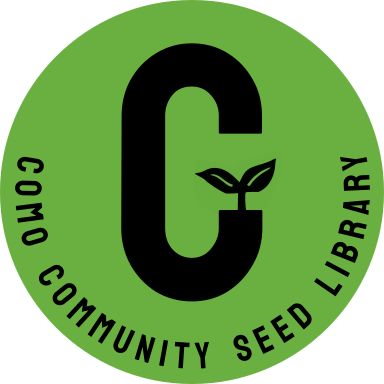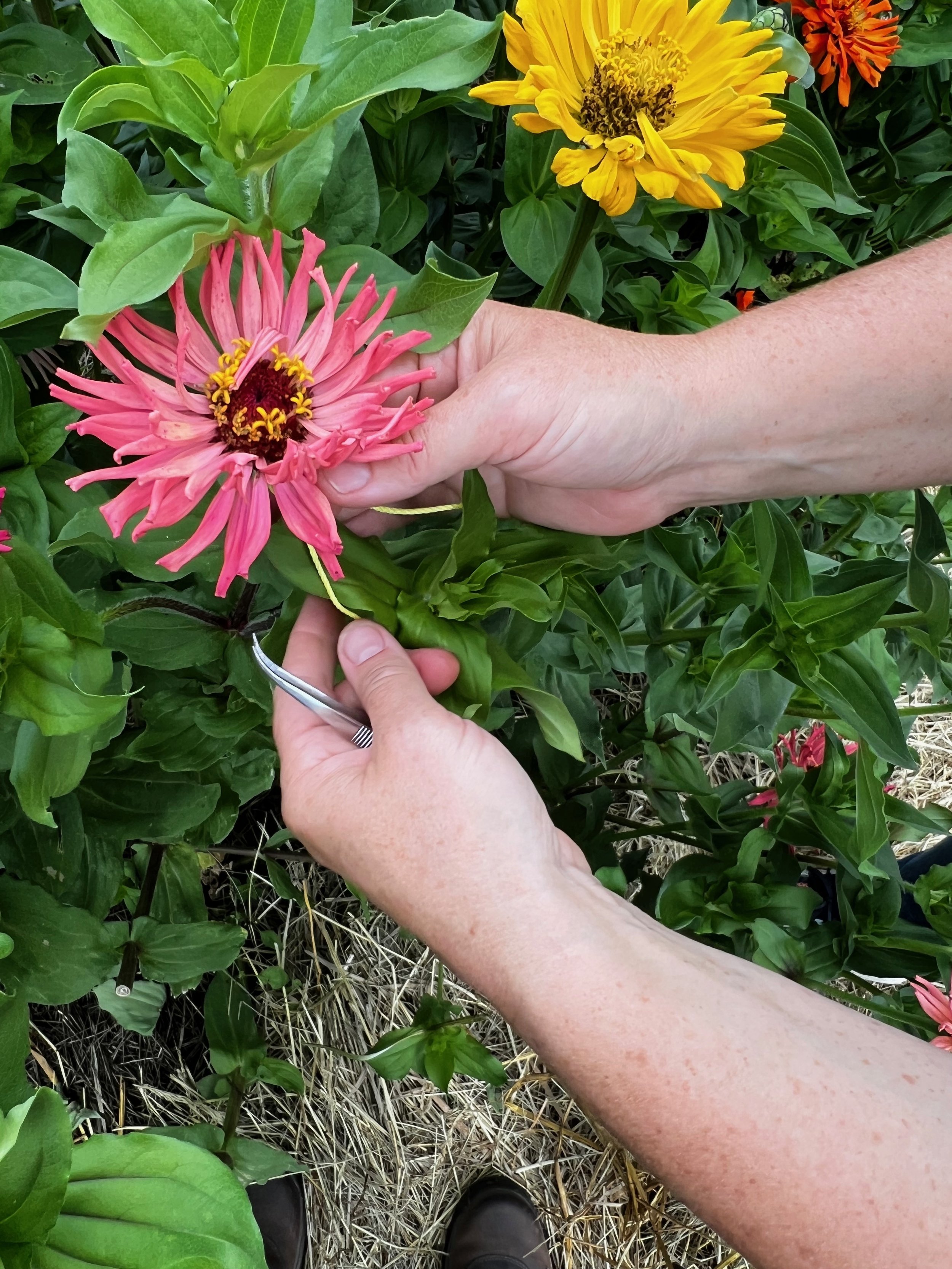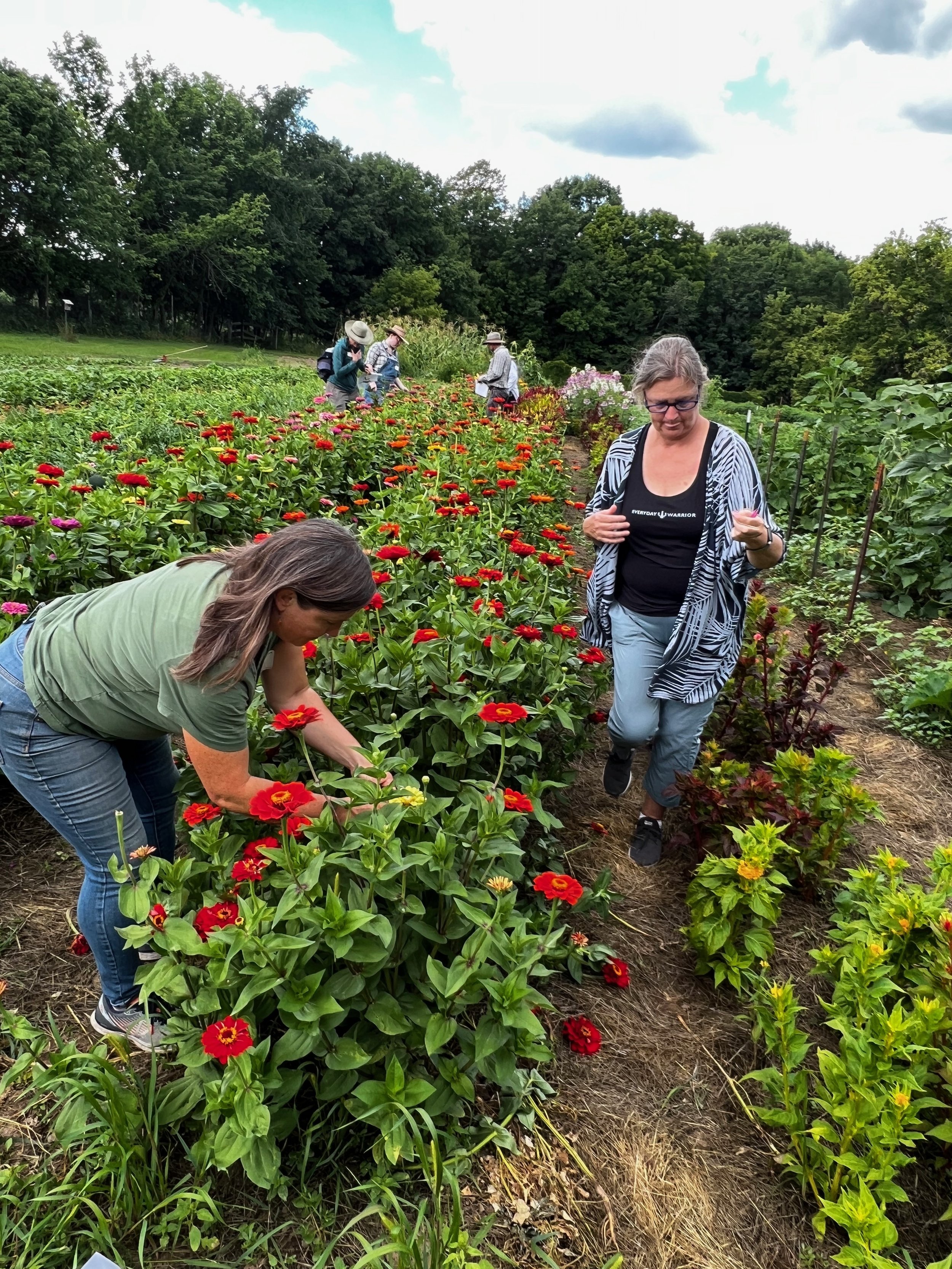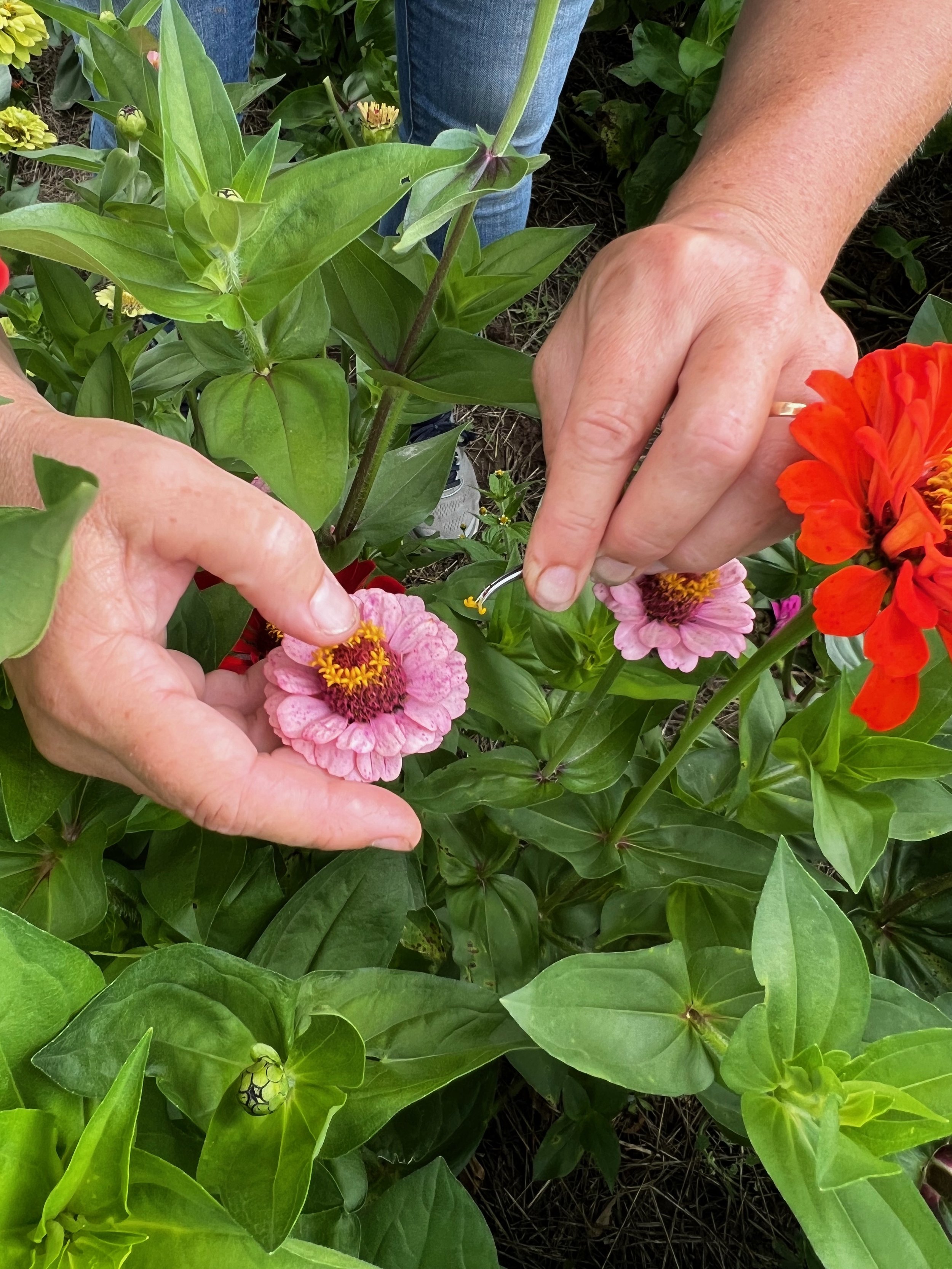Zinnias Are Blooming at the Land School Farm
It was a gorgeous summer day as the Zinnia Collective ventured out to tour and explore the Land School Farm. Located in Glenwood City, WI, the Land School is a teaching farm and rural campus of Lake Country School, an independent Montessori school located in Minneapolis, serving grades pre-K through 8.
The Land School staff is a small but mighty team of experienced farmers and environmental educators. Students come out to the Land School for a day, several delays, a week, or even three weeks at a time by the time they reach junior high. Not only are they engaged in planting, tending and harvesting crops, they also learn about the land and environment that surrounds them, including the indigenous history as well as natural history of the area. Students also help care for animals, including chickens, guinea hens, sheeps and llamas.
A member of the Zinnia Collective, the Land School grew over 200 zinnias from seed in their greenhouse this spring, and with the help of students, transplanted the seedlings into large garden beds on the farm, alongside watermelon, potatoes, and a variety of other herbs and vegetables. Many of these zinnias will be cut for market starting in late August, but not all. This is where the Zinnia Collective comes in.
Walking slowly through the vibrant flower beds, with swallowtail butterflies alighting on blooms and hummingbirds collecting nectar, Zinnia Collective members learned the basics of cross breeding. Outfitted with pairs of tweezers and balls of twine, we selected a pair of blooms we thought might benefit from one another. In some cases this meant adding a little pink blush to a Green Envy Zinnia, or mixing pollen from a variegated Whirligig Zinnia with another flower of a solid color. Key to this experiment were several factors:
An eye for creative possibility - what colors might mix well?
Selecting florets from a single petaled flower and brushing them along the stamen of a double or multi-petaled flower (as it is harder for these flowers to fertilize due to the multitude of petals crowding out their own florets)
Brushing not only one stamen with a floret, but as many stamen as possible to ensure that each seed is fertilized by pollen from the same selected flower.
Marking the flowers we had cross-pollinated so that they would not be cut for market, but instead left to dry in the field. We did this with a bright cord tied loosely around the stem.
The work was a true pleasure and an act of mindfulness as each flower drew us in completely to the details of color and texture, the sun on our backs, the crickets and birds around us, the deep blue of the sky overhead.
Time flew and we were already late. We reluctantly pulled our hands away from the flowers and our feet away from the garden. We discussed next steps on the way back to the cars: cross-pollinating more flowers, engaging students in collecting seed heads and sorting out the seeds, sharing seed and filling the seed libraries, but also setting aside the cross pollinated seed to grow in its own plot next summer. What will emerge? What new variations of color will surprise us? We’ll have to wait patiently to find out. In the meantime, this summer day will linger with us, into the dark of winter, and back out again when the seeds are ready for planting.




